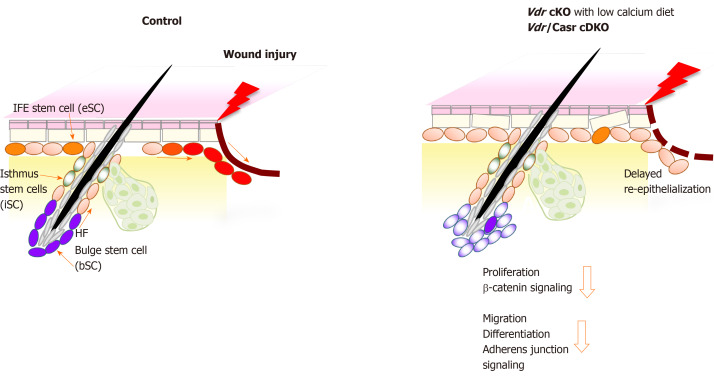Figure 1.
Schematic model showing that deficiency in both vitamin D receptor and calcium sensing receptor prevents proliferation and migration of keratinocytes thus delaying wound re-epithelialization of the wounded epidermis. The location of the different stem cells (SC) niches in skin is shown; stem cells in the hair follicle bulge (bSC shown in purple color) required for hair cycling, isthmus stem cells (iSC, green) in the junctional zone of the upper hair follicle responsible for sebaceous gland renewal, and epidermal stem cells (eSC, orange) in the interfollicular epidermis (IFE) responsible for epidermal regeneration. Upon injury of normal skin (left panel), these stem cells at the wound edge are activated to proliferate, shifting their normal cell fate to re-populate the disrupted epidermis by migrating to the wound and differentiating to re-epithelialize the wound (red color). In contrast, vitamin D receptor (Vdr) conditional knockout (cKO) mice fed a calcium deficient diet and Vdr/Casr double KO (cDKO) mice show defects in these stem cells that reduce their responses to wounding (right panel). The number of bSC and eSC decreases in Vdr cKO demonstrating defects in their self-renewal. Both Vdr cKO and cDKO mice have decreased injury induced proliferation of these stem cells associated with a reduction in β-catenin signaling. Delayed re-epithelialization is accompanied with defects in migration and differentiation of these stem cells, mediated by decreased AJ signaling. cKO: Conditional knockout; cDKO: Conditional double knockout.

